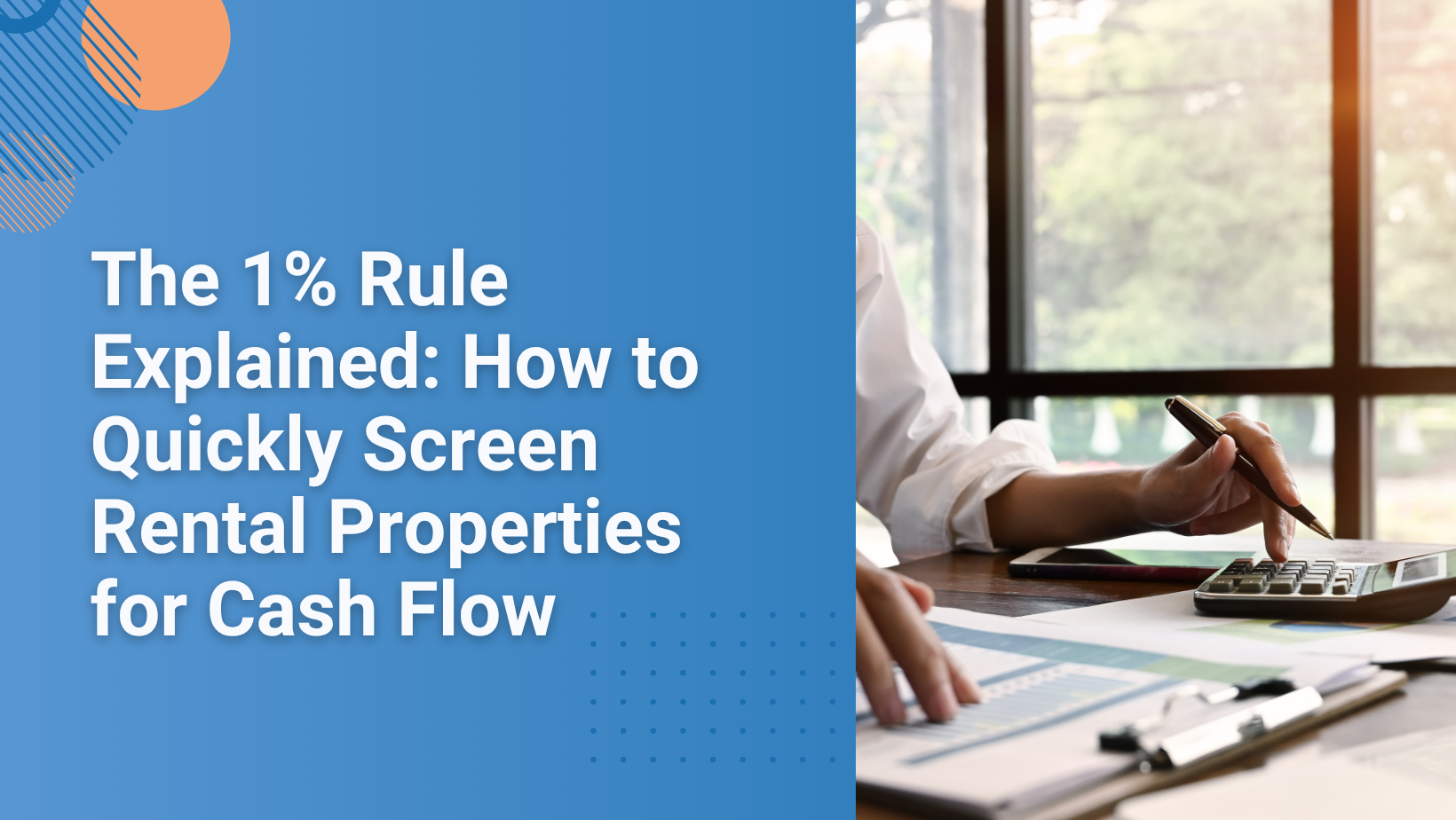
How To Value Rental Property

Updated May 5, 2021
Experts agree that real estate, particularly rental properties, is still a good investment.¹ You have to know what you're getting into before you start buying. A few questions you may want to ask yourself are:
• Will you see an ROI quickly enough?
• Will you truly see a return on investment (ROI)?
Stay connected
Get rental market insights delivered straight to your inbox.
Real estate investors, mortgage brokers, and real estate agents have several tools that help them determine the value of a property. From that, you can look at average rent data from your target market and figure out what kind of ROI you can expect (or not).
The quickest way to determine whether a property is worth investing in is to use the Gross Rent Multiplier method (GRM).² The GRM is a good rule of thumb that can help you decide whether something is worth further investigation or whether you should leave it and move on to the next prospect.
What Is the Gross Rent Multiplier (GRM)?
The gross rent multiplier is a way to calculate the value of a property based on the gross rents it's expected to generate in a year.²
To calculate GRM, divide the value of the property (or the selling price) by the property's annual gross rents.
So, if the value of a two-family house is $600,000 and the gross rent from the two apartments is $4,000 per month, or $48,000 a year. Your GRM would look like this:

Your GRM is 15. That means that this property sold for 15 times its gross income.
You can also use the GRM in reverse to determine the value of a property (or at least what it should be.
Let's say the average GRM for a neighborhood you're looking at is 7.5, and the average rent for a one-bedroom unit is $1,000. The value of a one-bedroom unit is your GRM multiplied by the gross annual rent.
7.5 x $12,000 = $90,000
The value of a one-bedroom should be around $90,000.
Of course, this is a very rough estimate of the value of a property, as is the GRM. It doesn't take into account expenses like taxes, overhead, and maintenance. Nor does it take into account market value or economic factors.
Let's look at a real-life example.

Union Square, Somerville, MA (View Rent Comp Report)
Just north of Boston sits the city of Somerville. It's considered part of the Boston metro area and is connected by the orange and red lines of the transit system (MBTA), as well as several buses. Until recently, though, it wasn't very easy to access the Union Square neighborhood and this was reflected by business vacancies and low rent prices..
Now, the MBTA is extending its green line train into the area, and a casino was built just a few miles away. New businesses have moved in, development has surged, and rents have risen 28.7 percent over inflation since 2011, according to the Tufts Daily.³
The average rent for a two-bedroom in the Union Square area is $2,923, according to Rentometer. And it costs about $900,000 to buy a two-bedroom. So the GRM for the average two-bedroom near Union Square is:

That's a pretty high GRM. Once you factor in taxes, which in Somerville is $11.32 per $1,000 assessed value, utilities, and other costs, this number might increase.
Calculating the capitalization rate for the same property would look like this:
$2,923 x 12 ÷ $900,000 = 3 percent
* Note that I used the same gross annual income instead of net income to get this number. Still, that's a pretty low capitalization rate.
Suddenly, it's looking like this "hot" neighborhood might not be worth the investment in just one two-bedroom apartment.
Real estate investors, appraisers, and real estate agents will use the income approach to determine value. But they also use other calculations to assess value and get a more accurate picture. Let's take a look at some of them.
The Three-Tiered Approach to Valuation
When it comes to valuation by a mortgage broker or appraiser, there are three tiers to valuing a property: the income approach, the sales comparison approach, and the cost approach.⁴ Using all three gives the evaluator a much more accurate idea of the value of a property.
Let's take a look at the three-tiered approach.
1. The Income Approach
The income approach looks at how much money you're likely to make on a property. It's basically a quick way to determine your return on investment.
While it's often used in commercial real estate, you can also use it for rental properties to understand if the projected income from rent makes a property worth its initial investment.
Before you can figure that out, though, you have to calculate your capitalization rate or cap rate. That's your projected net annual income divided by the value of the property. It is expressed as a percentage and determines at what rate you will capitalize on the property.
To calculate this number, you need to know a few things. First, what is the value, or list price, of a property? Let's say we're looking at a multi-family property with three units on the market for $1.2 million.
Then you need to determine what your net income will be from renting out the unit. The best way to figure that out is to look at average rents in the same area for similar properties.
Sites like Rentometer can help you do that.
For our multi-family, we'll say the average rent for similar properties in the area is $6,000 per month ($2,000 per month for each unit).
Now take that number and adjust it for taxes, maintenance, utilities (if you're paying for them), and other expenses. To make things simple, we'll adjust our monthly net income to $5,000.
So, your calculation looks like this:

Acceptable cap rates for multi-family vary depending on location, property type, and investor profile.
Valuing property using the income approach is a reasonable way to get a rough idea as to whether you should continue to investigate a particular investment or not.
2. Sales Comparison Approach
A sales comparison approach is a comparison of similar properties in the same market that have sold recently. Appraisers and real estate brokers use it frequently to determine the value of a property coming on the market.
By making a sales comparison, investors can determine whether they are paying too much or just the right amount for a property, or if they're getting a steal.
On top of a sales comparison, it's also essential to make a rental comparison. What are similar properties bringing in for rent? What can you reasonably charge if you buy a property in the area?
Again, that's where tools like Rentometer come in. It can give you average and median rent for properties of a similar size and with similar amenities.
3. Cost Approach
The theory behind the cost approach, according to Investopedia, is that a property shouldn't cost you any more to purchase than it would to build the same thing from scratch.⁵
To determine value using this approach, an appraiser adds the value of the land to the cost of construction. He then subtracts the loss in value over time, or how much the property has depreciated.
This calculation comes in handy for investors looking at apartment buildings and larger multi-family communities.
One final way to evaluate rental property is through the capital asset pricing model (CAPM). It's not part of the three-tiered approach, but it's still a handy tool.⁶
The Capital Asset Pricing Model
This approach compares the ROI on rental properties to other investments that have no risk, such as bonds. If the ROI of a property exceeds that of a no-risk investment, then you should consider moving ahead with it.
Again, this is a situation where factors such as location, amenities, and market are going to affect your pricing model.
Summary
To determine whether your target market is a good investment, take a look at average rents in your target market and compare it to average sale prices using a sales comparison model and an income model. Then look at the ROI compared to no-risk investments.
In our Union Square scenario, the investment may still be too risky given the high sales prices. An investor may not see a return on investment as quickly as they would with something like bonds unless they can guarantee high rents.
When it comes to real estate investments, look hard at the numbers before you buy. That up-and-coming neighborhood may already be overvalued, while the often-ignored neighborhood down the street may offer solid investments.
Use the gross rent multiplier as well as other calculations to make sure you're truly getting a good ROI on your investment.
About the Author: Laurie Mega is a writer, editor, and former landlord. She also specializes in content marketing and SEO. Her work has been published by HomeandGarden.com, The Economist, Buildium, and FamilyEducation, among others. She lives in the Greater Boston Area with her husband and two boys.
Citations
2. https://www.thebalancesmb.com/how-to-calculate-and-use-the-gross-rent-multiplier-grm-2866791
4. http://www.crefcoa.com/gross-rent-multiplier.html
5. https://www.investopedia.com/
6. https://www.investopedia.com/
Stay connected
Get rental market insights delivered straight to your inbox.

 LinkedIn
LinkedIn
 Facebook
Facebook
 Email
Email
 Twitter
Twitter

 Quickly evaluate current rents with QuickView™ Rent Estimates
Quickly evaluate current rents with QuickView™ Rent Estimates

